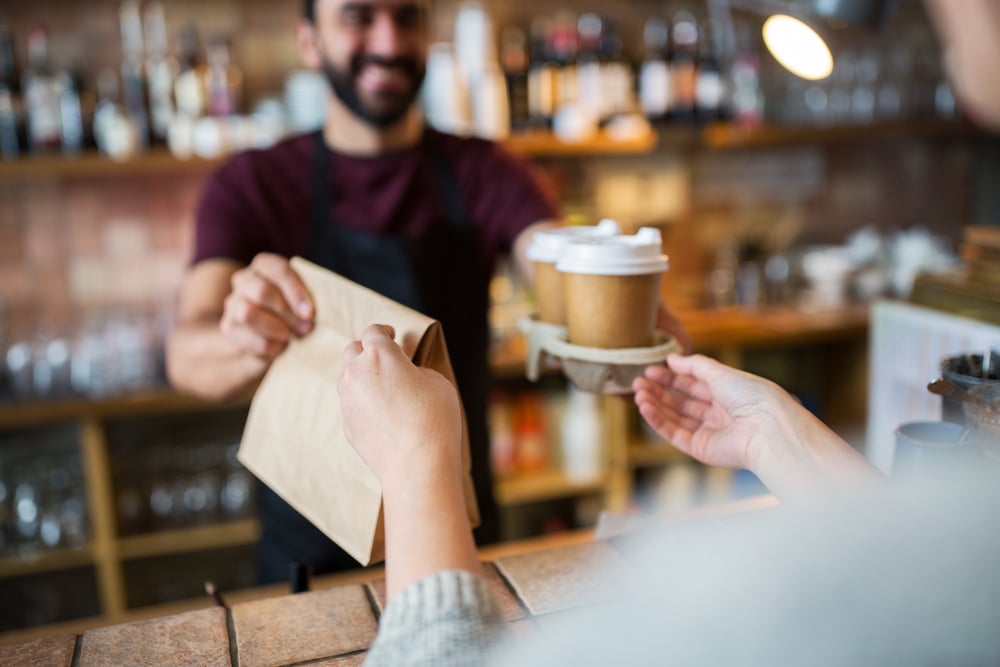A clear focus on customer retention is a sound sales strategy. Research has shown that companies with the highest levels of customer loyalty grow revenue 2.5 times faster than comparable companies. Returning customers are valuable, and rewarding customer loyalty is an effective way to keep them coming back.
Rewarding Customer Loyalty Is Becoming More Competitive
A recent survey found that competition for loyalty is increasing. In 2019, the average consumer belonged to 14.8 loyalty programs, but was only active in 6.7. Only 44% of members were very satisfied with the loyalty programs they belong to, down from 47% a year earlier. At the same time, 79% of consumers said a loyalty program makes them more likely to continue doing business with a brand. With numbers like those, it is important to stand out. Major recent program overhauls, like those of Target and Starbucks in 2019, bear witness to this. To boost retention, brands and retailers should consider how they can create a program that rewards customer loyalty in a unique and engaging way.
Be Simple but Engaging
The so-called “earn and burn” strategy is the most common form of loyalty reward where customers are rewarded after a certain number of visits or spend—for example, after buying nine cups of coffee, the tenth one is free. One way that brands and retailers can put an “earn and burn” program to use is with a customer loyalty rewards app, which incentivizes customer engagement and interaction. With an app, brands and retailers can reward customers for making repeat visits or purchases and also encourage them to engage with new products through incentivization.
Create a Satisfying Experience
Loyalty is emotional as well as practical. Brands and retailers should hone in on the things that give them unique appeal and further develop them. The top reason, customers say, for their emotional connection to a brand is common interest (72%). Women’s athletic wear brand Lululemon, for example, offered exclusive gear and special fitness classes when they launched their loyalty program. But remember simplicity; consumers don’t want to participate in a program that is confusing or makes rewards too hard to earn. Macy’s acknowledged this fact as it simplified and liberalized its loyalty program as part of its restructuring. The commonly used points system provides clear benchmarks with explicitly stated rewards. Points can be earned for a number of activities, such as referring a friend, writing a review or simply enrolling in the program.
A Little Exclusivity Helps Too
Brands and retailers can incentivize participation in their loyalty programs through tiering. The most active participants in the program can be awarded higher status, with more appealing rewards. This not only leads to customer retention, it incentivizes purchase and builds a sense of exclusivity tied to the higher status in the program. When Run Everything Labs upgraded its rewards program, the supplement producer created three tiers—novice, pro, and elite, based on points earned, with progressively higher transactional incentives. Sephora calls its tiers Beauty Insider, VIB (Very Important Beauty), and Rouge. Amazon Prime pioneered the premium loyalty program, where members start off at the VIP level by paying for it. This approach has proven successful with retailers that serve customers who buy frequently.
Personalize

Birthday bonuses are a perennial hit in loyalty programs, but there are many other ways to bring a personal touch into a loyalty program. Rewards can be tailored to individual tastes based on purchase history or information collected during the loyalty program enrollment process. Gamification is a great way to collect data as well. Brands and retailers can offer points in return for a customer watching videos about products, taking surveys, leaving reviews, and so on. Once enough data has been gathered, brands and retailers can offer purchase recommendations or content—like suggestions (“10 Things to Do with Your New …”), instructions for care, lists of accessories, gift suggestions—to the program member. Pure entertainment, such as trivia quizzes, games, and social media content, are also wonderful for strengthening engagement as well.
Form Partnerships
Partnering with a complementary brand is an emerging trend in loyalty programs. So far, we have seen it most in hospitality, airlines, and car rentals, but there are some big names leading the way in retail. NikePlus members get “unlocks” that give them access to Apple Music, the guided meditation and mindfulness service Headspace, and fitness classes through ClassPass. Starbucks has also been one to leverage partnerships with companies like Lyft and Spotify.
Rewarding Customer Loyalty and Building Retention with a Third-Party App
An effective way to stand out in this crowded market is to partner with a third-party like Shopkick to reward customer loyalty. By partnering with Shopkick, brands and retailers have access to an already-loyal user base, immediately broadening their audience and reach. Shopkick also gives companies a new way to engage with current customers.
Here’s how it works: Shopkickers begin their incentivized experience by browsing engaging in-app content from several brands and retailers, whether they’re at home or on-the-go. This content includes curated lookbooks, informative video ads, and more. For partners, this content helps build pre-shop awareness and consideration and puts products at the top of shoppers’ minds. Users can check the Shopkick app to see which brands or retailers offer “kicks,” or rewards points, which incentivize shoppers to visit a store or browse online. In-store, Shopkick utilizes an engaging gamification strategy that drives shoppers to products at-shelf and encourages physical product interaction in exchange for kicks. This allows brands to boost product awareness when it truly matters most—in aisle, with the product in hand. By offering users an additional kick incentive for making a purchase, Shopkick closes the loop and drives sales. Eventually, Shopkick users redeem their kicks for free gift cards, which builds a positive affinity and loyalty for the brands and retailers that awarded them.
Your customers will remain loyal and be delighted to earn kicks for making purchases across a wide range of brands and retailers.
Your customers will remain loyal and be delighted to earn kicks for making purchases across a wide range of brands and retailers. This leads to better retention and increases your customer base, as your brand automatically becomes accessible to a large pool of loyalty program members. Shopkickers are accustomed to a rewarded shopping experience, and they don’t have to worry about being a part of multiple rewards programs.
You can find out more about how Shopkick garners customer loyalty by reading our success stories. You can also contact Shopkick to learn how you can start rewarding your loyal customers like our partners.
Image courtesy of Syda Productions





